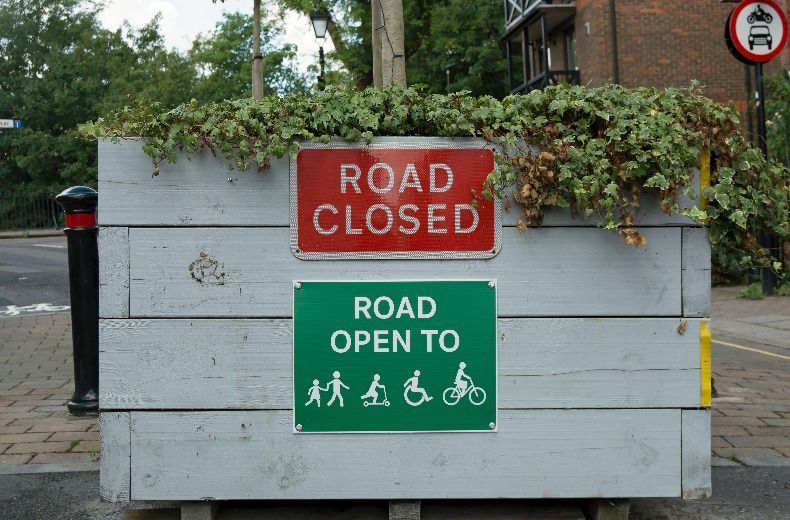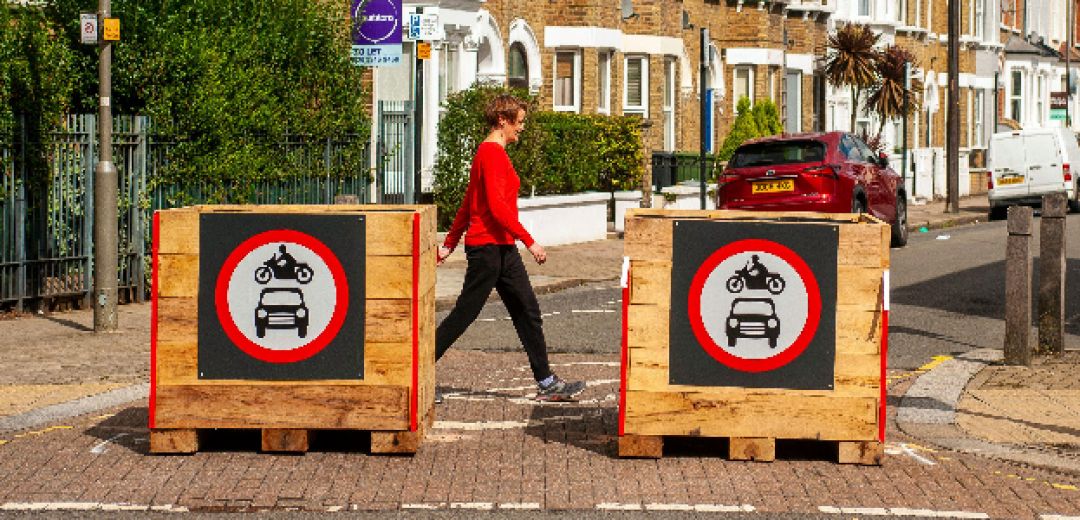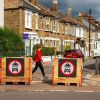The aim is to lower the number of vehicles on the roads, increase the number of people walking or cycling, and reduce crime.
Part of the goal is to try and cut CO2 emissions in the areas where LTNs or similar schemes are introduced.
Read on for our latest driving advice guide.
What are Low Traffic Neighbourhoods?
In recent years, the Government has made a concerted effort to tackle air pollution created by vehicles and increase the number of people getting to their chosen destination by walking or cycling.
LTNs were introduced as part of this – with the additional aim of reshaping residential areas where they are installed to create a safer place for people to walk and live.
By minimising traffic caused by people ‘rat-running’ – a tactic where people use residential roads as short cuts – people who live and work in the area can access the roads more easily.
The aim is to also make it easier for emergency services to travel through major cities where LTNs are in place.
Some LTN areas are also available at certain times of the day and for public transport.
The overall goal is to reduce air pollution, noise pollution, and road accidents.
Although they have been around since the 1970s, in Spring 2020, the Government announced mass funding to make these areas more prominent in the capital.
Since then, they have expanded to many towns and cities across – with plans for it to be expanded across the UK.
How do Low Traffic Neighbourhoods work?
LTNs use barriers, bollards, road signs, and planters to restrict cars, vans, and other vehicles, whilst allowing pedestrians and cyclists through.
Other areas where Low Traffic Neighbourhoods are in operation use automatic number plate recognition cameras.
Some areas just use signs showing they are LTNs and/or display warning signs that drives could be fined for travelling through these roads.
How are LTN areas chosen?
Initially, the Low Traffic Neighbourhood scheme was introduced by London Mayor Sadiq Khan in early 2020 following £250m in government funding.
Khan’s plan was to make London a healthier, safer, more inclusive, cleaner, and greener city – and make 80% of all trips by active or sustainable modes by 2041.
They are all funded by the Department for Transport (DfT).
Following their introduction, Bristol and Oxford introduced their own LTNs.
In recent years, Manchester, Birmingham and Sheffield were the following cities to introduce them.
Are LTNs permanent?
Most Low Traffic Neighbourhood schemes that have been introduced with temporary measures in order to gain data to see if they should be made permanent.
Following the consultation period, many of them across the country have been made into permanent fixtures – creating LTN areas.

Benefits of LTNs
When Low Traffic Neighbourhoods were announced, there was some controversy over how they would be implemented and what the results of them would be.
Their primary benefit is reducing air and noise pollution through the reduction of through-traffic.
They also encourage more people to walk and cycle – and DfT statistics have shown that in areas where LTNs have been introduced, crime rates have fallen.
Although the DfT also claims that LTNs make it easier for emergency service vehicles to get to their destination.
Residents within LTN zones have given a positive view on the scheme – with many complimenting the improvements to the area.
Supporters also claim that there is an increase in social interactions between neighbours, thus strengthening local communities.
One of the added benefits is due to more people walking, local businesses gain more customers that are now walking by instead of driving.
Criticism of LTNs
Opponents to Low Traffic Neighbourhoods often dispute the apparent success of the scheme by stating that although they have improved the areas where they are situated, they just push the problems elsewhere.
The biggest issues stem from drivers being pushed onto already busy main roads and having to spend more time in traffic to get around LTNs.
By creating longer journeys, it can also make drivers create more emissions.
Although some claim that LTNs make it easier for emergency services, some LTNs are installed so no vehicles larger than a bike can travel through – making it impossible for larger vehicles to get to their destination quicker than before they were introduced.
If you are unfamiliar to an area and are using a sat nav – many do not take this into consideration and cause people to get lost in an area they are not familiar with.
London’s Low Traffic Neighbourhoods
Currently, London’s LTN areas are based in Camden, Croydon, Ealing, Hounslow, Lambeth, Newham, and Waltham Forest.
However, other councils within the capital have dropped out of using the scheme.
There are several discussions either planned or currently ongoing which will see new areas being added and current ones being adapted after consultations with local residents.
Fines for travelling through LTNs
In June 2024, it was reported that fines for driving through a LTN have cost drivers across the country over £56 million.
Fines cost motorists £130 per offence, which was reduced to £65 if paid within 14 days.
Have they been a success?
Although they have been a controversial scheme for many, one report claims LTNs have been a success – despite the challenges they present to drivers.
A report from the Centre for London stated: “Using a mixed-methods research approach including a review of studies looking at the impact of LTNs, technical guides on how to deliver LTNs, surveys on Londoners’ views, and roundtables with the professionals involved in implementing LTNs, our report concludes that LTNs are effective, but are only one part of the solution to reduce private car use and create healthier streets.
“Furthermore, to increase their effectiveness, we call for increased consultation and communication between residents and boroughs, alongside supporting measures that further encourage the switch to greener active travel.”
Do you believe that LTNs should be brought in nationwide? What are your personal experiences with them? What are the pros and cons of LTNs? Leave your comments below.

RAC sale – up to 33% off*
• Roadside cover from £5.29 a month†
• We get to most breakdowns in 60 mins or less
• Our patrols fix 4/5 breakdowns on the spot











